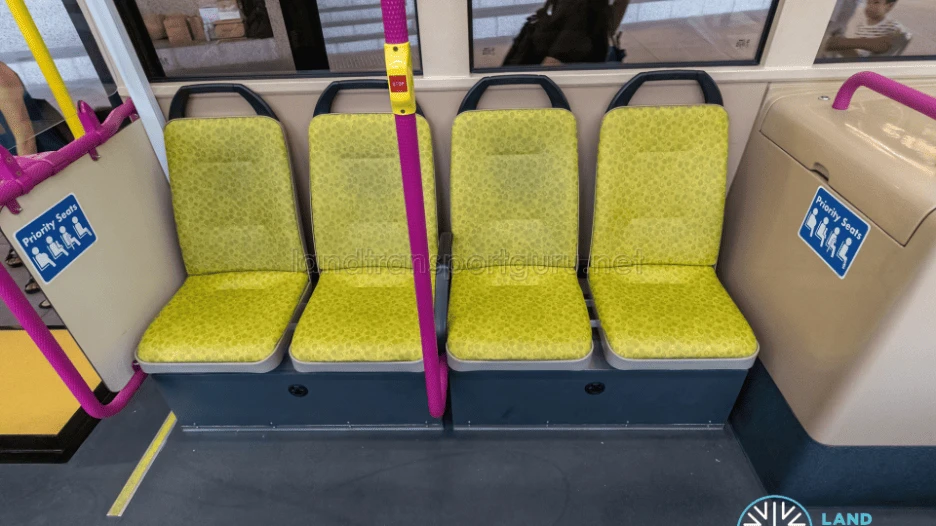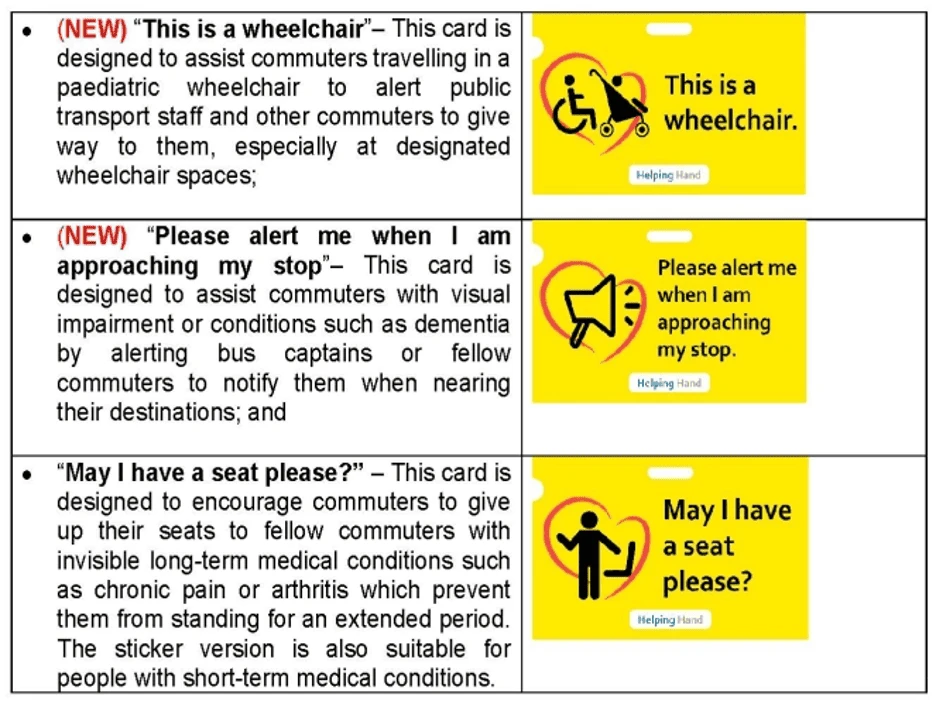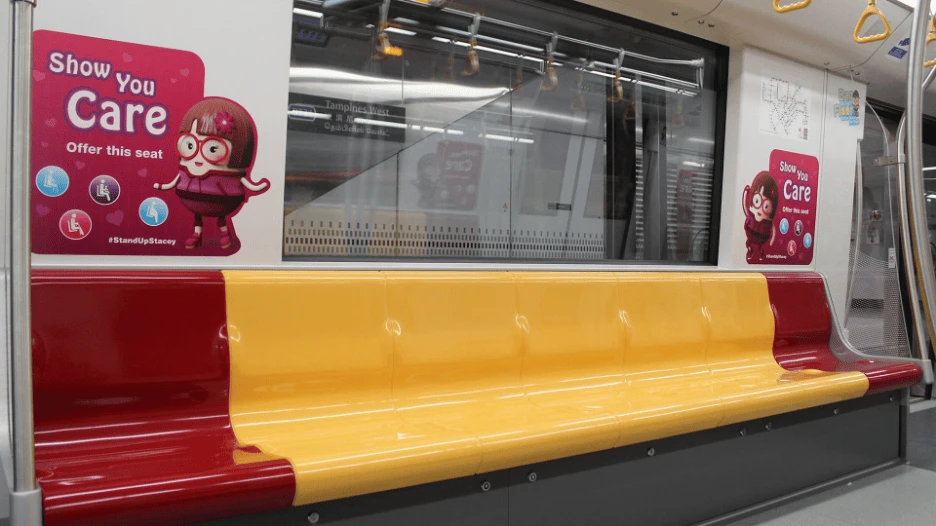Last update: October 27, 2025
Riding with Kindness: All About Priority Seats in Singapore
You step off the plane, jet‑lagged and lugging your roller bag through Changi Airport. You hop onto the MRT, clutch your tote, and your eyes scan the carriage: near the doors, you see a few seats marked in a different colour — the priority seats. Should you sit there? Will people mind? You glance around: a pregnant lady, someone with a walking stick, maybe an elderly commuter. You hesitate, wondering whether your obvious “tourist with big backpack” status allows you to claim one of those seats — or whether the right move is to stand.
That moment — that split‑second of social uncertainty — is what we want to demystify in this post. By the end, you’ll know exactly what priority seats mean in Singapore, when to use them (or give them up), and what kindness in motion looks like.
Whether you're exploring Singapore for the first time or you live here and want to help build a more caring commute, let's dive in.
What are the priority seats in Singapore?
Picture this: you board a bus or MRT carriage, walk in, and see a few seats near the doors painted a different colour (often with icons of an elderly person, a pregnant figure, a cane) or labelled “Priority Seat.” These are not premium seats; they’re seats of consideration.
Where you’ll find them
On MRT/LRT/trains
Priority seats are usually located near the train doors. Their position ensures that those who find it harder to walk far or climb stairs can get to them quickly. In some newer MRT designs or in trial schemes, there are talks of “priority cabins” especially for wheelchair users, the elderly, or expectant mothers.
On buses
All bus seats between the entrance and the exit doors are officially designated as priority seats, including the first row right after the exit door.
In older buses, the first few rows near the front are often the priority ones.
Around station queues & priority queues
Beyond seating, Singapore is implementing priority queue zones at MRT and LRT stations. These are waiting areas reserved for wheelchair users, seniors, expectant mothers, and others who benefit from boarding ahead.

Image source: Land Transport Guru
“Invisible needs” & the helping hand scheme
Not all mobility needs are visible. Some people might have chronic pain, arthritis, post‑surgery discomfort, heart conditions, or fatigue issues that don’t show on the outside. For these commuters, Singapore offers the Helping Hand scheme.
“May I Have a Seat Please” stickers/lanyards/cards
Started in October 2019, the sticker was a pilot to let commuters with short‑term invisible medical conditions signal they need a seat. From April 2021 onwards, a lanyard and card version (for longer‑term conditions) has been distributed network‑wide across buses and trains. You don’t need to show a medical certificate to get one. These identifiers are free and can be collected at passenger service centres in MRT stations, bus interchanges, or selected TransitLink offices.
What they signify
Wearing or displaying one means “I may look okay, but I need to rest or sit.” It’s a gentle prompt for fellow commuters to offer a seat or show kindness.
Reception & challenges
Not everyone will automatically respond — some people might stare, hesitate, or not notice. Media reports have documented stories of lanyard wearers traveling through crowded trains and getting few seat offers, despite their identifier. But over time, awareness is growing, and transport staff are trained to look out for and assist these commuters.

Image source: Land Transport Authority
Etiquette & tips for riding with respect
Here’s where we translate rules into human action. Think of this as “commuter’s kindness playbook.”
If you need a seat
Wear or carry the identifier, if applicable
If your condition is invisible, use the “May I Have a Seat Please” lanyard, card, or sticker. It helps others understand your need without you having to explain.
Position yourself near priority seating when boarding
On buses: stand close to the front door or priority rows so others can see you. On trains: aim for the priority section near doors.
Accept graciously when someone offers
If someone gestures, accept with a smile or a “thank you.” No need for long explanations.
If no one offers — politely ask
“Excuse me, may I sit here?” is okay. It’s gentle, non‑accusatory, and gives people a chance to respond.
Use the seat wisely
If someone more in need boards later (elderly, expectant, differently enabled), be ready to give up the seat. Avoid spreading out (e.g., putting your bag over one or two spots) when it’s crowded. Try to keep your ride time in the seat modest if others may need it.
If you don’t need the seat
Stay alert to incoming riders
Elderly, pregnant mothers, people with strollers, invisible‑condition wearers — all deserve your awareness.
Be ready to stand
If you see someone boarding who probably needs that space, offer to swap. It doesn’t hurt to stand for a few stops.
Don’t hog the priority row
Especially in a crowded ride, sitting in priority seats for long periods when others need them can feel disrespectful.
Empathy over enforcement
Don’t shame someone who didn’t give up their seat (you never fully know someone’s need). Focus on your own actions — be kind, not judgmental.
Spread awareness, not guilt
Talk about it. If someone doesn’t notice the lanyard or priority seat, a gentle reminder (“These seats are for those who need them most”) can plant seeds of change.
More than seats — A culture of care
A seat on the train or bus might seem like a small thing, but when we give up our seat for someone else, it’s a tiny act with huge ripple effects. It says:
- “I see you.”
- “You matter.”
- “We’re in this together.”
In a fast-paced city like Singapore — where everyone’s chasing time, plugging into screens, or navigating unfamiliar MRT lines — these small gestures cut through the rush. Whether you're a tourist figuring out how to get from Orchard to Gardens by the Bay, or a local catching the 7:12 am bus from Ang Mo Kio, how you treat others in these shared spaces matters.

Image source: SGTrains
Why does it go beyond Singapore?
The beauty of priority seats is that they speak a universal language — kindness. If you're visiting from abroad, what you learn here can go home with you. If you’re a local, your behaviour helps shape how visitors see us.
Helping someone find a seat or standing up when you’re able doesn’t cost a cent. But it builds something priceless: trust. Respect. A little more grace in the daily grind.
Next time you ride…
Before you plug in your earbuds or scroll TikTok, try this:
- Look up. Look around.
- Notice who’s boarding.
- If you’re in a priority seat, ask yourself: “Does someone else need this more than I do?”
- If you’re someone who needs the seat, don’t be afraid to ask.
Better yet, talk about it.
Post a story of someone offering you a seat. Share how you stood up for an elderly uncle. Help normalise gracious commuting, because the more we talk about kindness, the more it spreads.